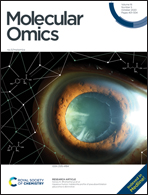Enhancer recognition and prediction during spermatogenesis based on deep convolutional neural networks
Abstract
Motivation: enhancers play an important role in the regulation of gene expression during spermatogenesis. The development of ChIP-Chip and ChIP-Seq sequencing technology has enabled researchers to focus on the relationship between enhancers and DNA sequences and histone protein modifications. However, the prediction of enhancers based on the locally conserved DNA sequence and similar histone modification features is still unknown. Here, the present study proposed a convolutional neural network (CNN) model to predict enhancers that can regulate gene expression during spermatogenesis. Results: we have obtained a positive set of enhancers using the P300 locus, verified by experiments, while a negative set was constructed using the promoter as a non-enhancer locus. The model was trained on all types of specific cells during spermatogenesis independently, and the transfer learning strategy was used to fine-tune the model based on which the model can be trained and adapted to other cells quickly. We visualized the convolution layer of the trained model and aligned the predicted enhancer with the JASPAR database. The results showed that the model was highly matched with some important transcription factors during spermatogenesis, signifying the reliability of the model. Finally, we compared the CNN algorithm with the gkmSVM algorithm (Support Vector Machine). It is well known that CNN has better performance than the gkmSVM algorithm, especially in the generalization ability. Our work demonstrated their strong learning ability and the low CPU requirements for the experiment, with a small number of convolution layers and simple network structure, while avoiding overfitting the training data. At the end of the experiment, we used the trained model to build an enhancer recognition website for further research and communication.



 Please wait while we load your content...
Please wait while we load your content...